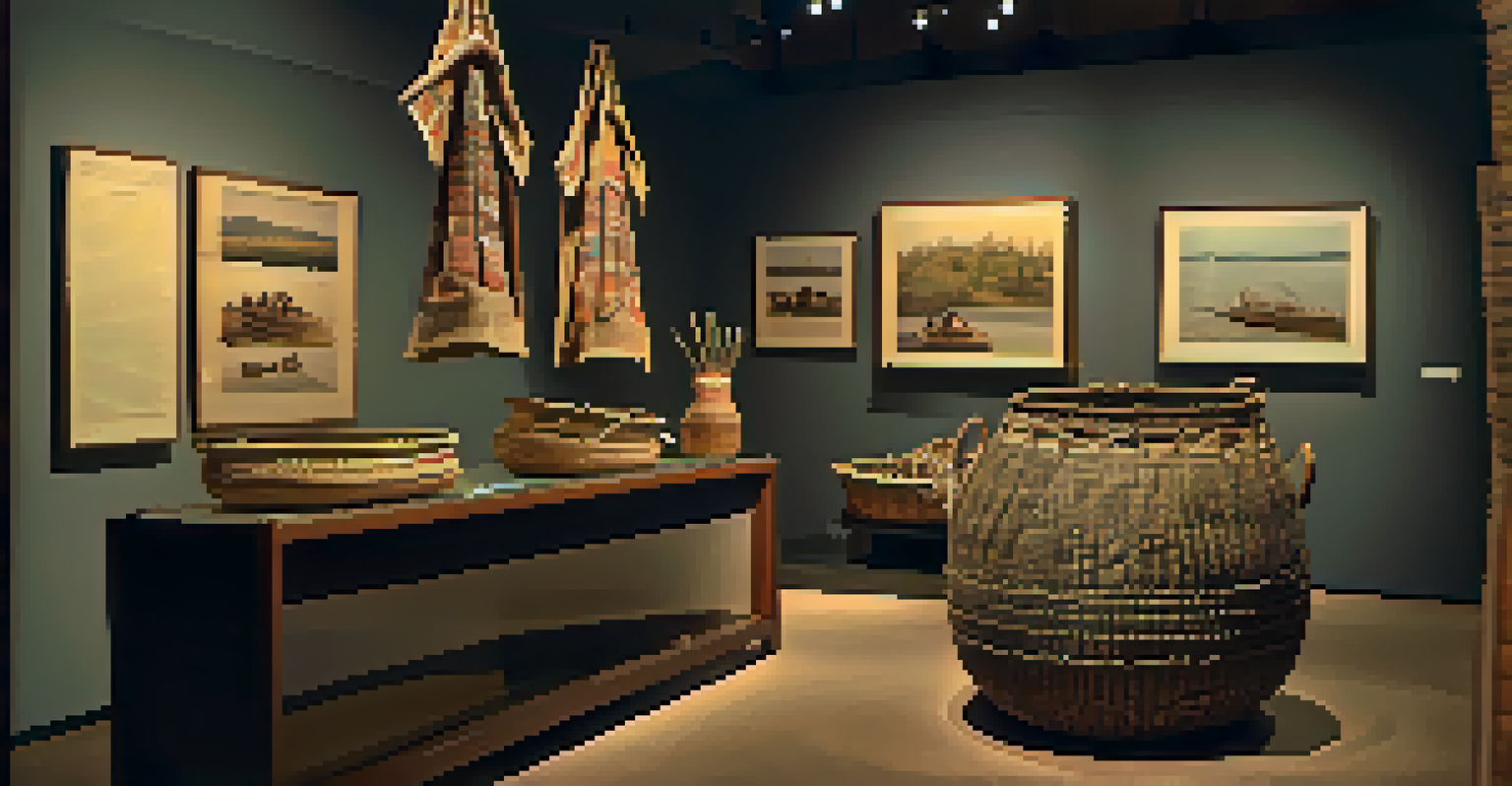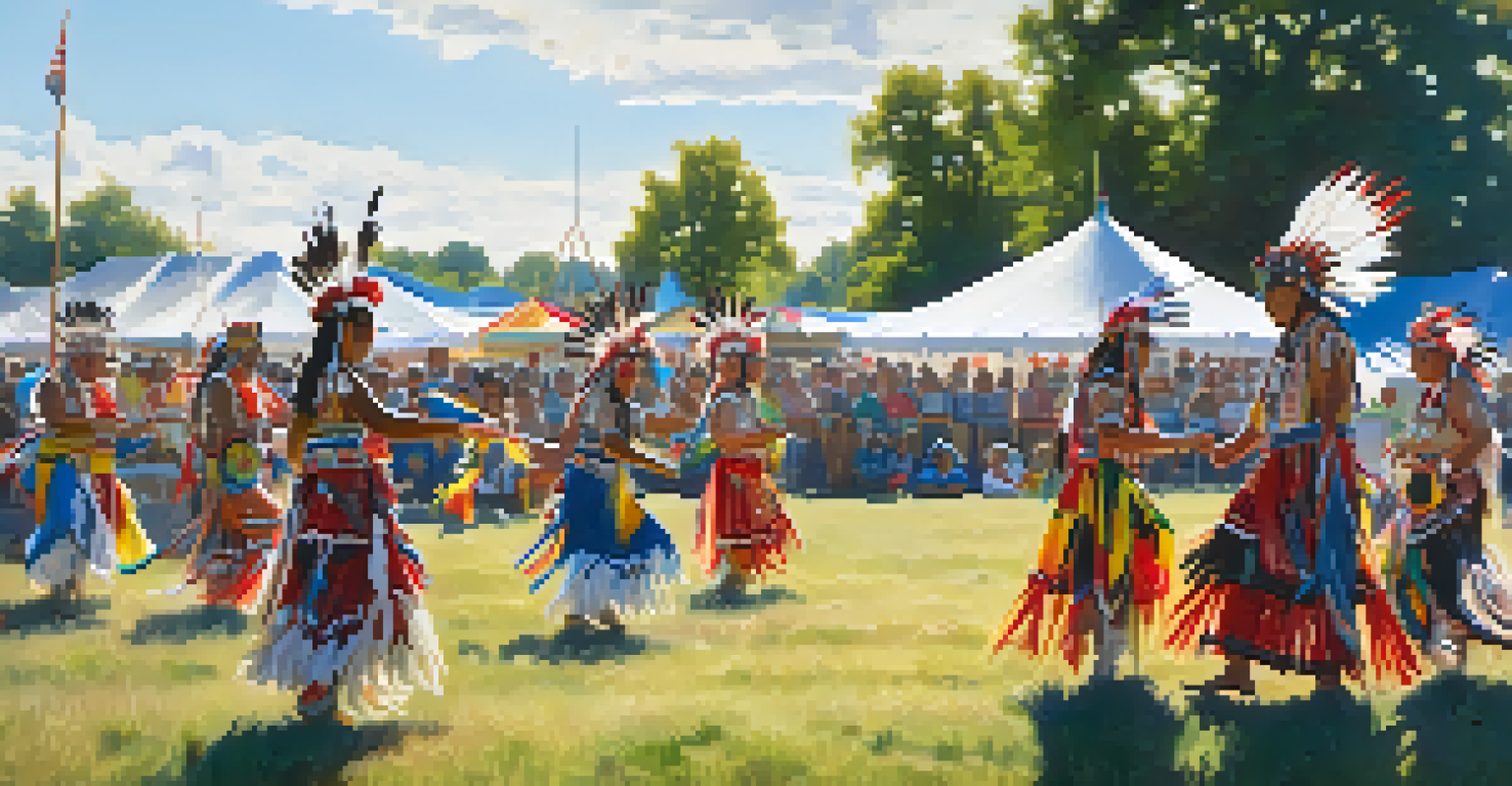Cultural Heritage: Oregon's Indigenous Historic Landmarks

Understanding Oregon's Indigenous Cultures and Heritage
Oregon is home to a diverse array of Indigenous cultures, each with its own unique history and traditions. These communities have thrived on the land for thousands of years, contributing to the rich tapestry of Oregon's cultural landscape. From the coastal tribes to those in the interior, the Indigenous peoples of Oregon share a deep connection to the land that informs their heritage.
Indigenous peoples have the right to maintain and strengthen their distinct political, legal, economic, social, and cultural institutions, while retaining their right to participate fully in the political, economic, social, and cultural life of the State.
Cultural heritage, in this context, refers to the traditions, languages, and historical landmarks that reflect the identity of these communities. This heritage is not just about artifacts or historical sites; it encompasses the stories and practices that have been passed down through generations. Understanding this cultural context is crucial for appreciating the significance of Oregon's Indigenous landmarks.
As we explore these landmarks, it's essential to recognize the ongoing impact of colonization and contemporary challenges faced by Indigenous communities. Acknowledging their resilience and efforts to preserve their culture adds depth to our understanding of Oregon's history.
Key Indigenous Tribes of Oregon and Their Histories
Oregon is home to several key Indigenous tribes, including the Confederated Tribes of Warm Springs, the Umatilla, and the Klamath. Each tribe has its own distinctive history and contributions to the state's cultural heritage. For instance, the Warm Springs tribes are known for their deep-rooted traditions of fishing and weaving, which are celebrated through various events and festivals.

The Umatilla people, on the other hand, have a rich history tied to the Columbia River, which has been a crucial source of sustenance and cultural significance for centuries. Their stories reflect a profound respect for nature and the importance of preserving their ancestral lands. Understanding these histories helps contextualize the landmarks that honor their legacies.
Diverse Indigenous Cultures in Oregon
Oregon's Indigenous tribes each have unique histories and traditions that contribute significantly to the state's cultural heritage.
The Klamath tribe also offers a fascinating glimpse into the diverse cultural practices in Oregon. Their connection to the land, particularly around the Klamath Lake area, is not only a source of pride but also a foundation for their ongoing cultural revival efforts.
Prominent Historic Landmarks in Oregon
When it comes to historic landmarks, Oregon boasts several significant sites that highlight Indigenous heritage. One notable landmark is the Tamástslikt Cultural Institute, which serves as a museum and educational center for the Confederated Tribes of the Umatilla Indian Reservation. This institute showcases artifacts and stories that bring the tribe's history to life.
The land is not just our home; it is our identity, our culture, and our heritage.
Another important site is the Celilo Falls, a sacred fishing site for many Indigenous peoples. Although the falls were submerged following the construction of a dam, they remain a symbol of cultural significance and resilience. The stories surrounding Celilo Falls remind us of the deep connection between the land and the Indigenous communities.
Additionally, the Oregon Caves National Monument features ancient caves that are linked to Indigenous stories and practices. These natural landmarks provide a glimpse into the spiritual beliefs and traditions of the Indigenous peoples who have lived in Oregon for millennia.
The Role of Oral Traditions in Preserving Heritage
Oral traditions play a vital role in preserving the cultural heritage of Oregon's Indigenous tribes. Through storytelling, songs, and ceremonies, these communities pass down their histories and values from one generation to the next. This oral transmission keeps their culture alive and relevant in a modern context.
For many Indigenous peoples, stories are not just entertainment; they are a means of teaching important life lessons and connecting individuals to their ancestors. This practice highlights the significance of maintaining a living culture that evolves while still honoring past traditions. In this way, oral traditions become a bridge between generations.
Preserving Landmarks and Heritage
Many historic Indigenous landmarks face challenges from climate change and urban development, highlighting the need for preservation efforts.
As we engage with these stories, it becomes clear that they are integral to understanding Indigenous identities and their relationships with the land. By learning from these narratives, we gain insights into the perspectives and wisdom of Oregon's Indigenous communities.
Challenges Facing Indigenous Landmarks Today
Despite their significance, many Indigenous historic landmarks face numerous challenges today. Issues such as climate change, urban development, and lack of funding threaten the preservation of these sites. These factors not only impact the physical landmarks but also the cultural practices tied to them.
Moreover, the ongoing effects of colonization continue to pose challenges for Indigenous communities. The struggle for recognition and rights over ancestral lands is a vital issue that affects the preservation of cultural heritage. Advocating for these rights is crucial for ensuring that Indigenous voices are heard and respected.
Efforts to safeguard these landmarks often involve collaboration between Indigenous communities and government agencies. By working together, there is potential to create sustainable solutions that honor the past while promoting future cultural continuity.
Celebrating Indigenous Heritage Through Events and Festivals
One of the most vibrant ways to experience Indigenous heritage in Oregon is through cultural events and festivals. These gatherings celebrate the traditions, art, and history of Indigenous peoples, providing an opportunity for both Indigenous and non-Indigenous communities to learn from one another. Events like the Annual Warm Springs Tribal Member Gathering showcase traditional dances, crafts, and stories.
Additionally, the Umatilla Tribe hosts the annual Umatilla Powwow, where participants come together to honor their heritage through dance, music, and storytelling. These events not only serve as a celebration of culture but also as a platform for educating the public about Indigenous histories and contemporary issues.
Celebrating Through Festivals
Cultural events and festivals provide vibrant opportunities for both Indigenous and non-Indigenous communities to engage with and celebrate Indigenous heritage.
By attending these festivals, individuals can deepen their understanding of Oregon's Indigenous cultures while actively supporting their efforts to preserve and revitalize their heritage. It's a beautiful way to foster connections and show respect for the rich traditions that have shaped the state.
How to Support Oregon's Indigenous Communities and Heritage
Supporting Oregon's Indigenous communities and their heritage can take many forms. One of the simplest yet most impactful ways is to educate oneself about the history and current issues facing these communities. Engaging with literature, documentaries, and local resources can provide valuable insights and foster understanding.
Additionally, participating in local events, visiting cultural centers, or supporting Indigenous artists and businesses can help uplift these communities. By choosing to invest in Indigenous-led initiatives, individuals contribute directly to the preservation of cultural heritage and the empowerment of these communities.

Lastly, advocating for policies that protect Indigenous rights and land can create lasting change. By elevating Indigenous voices and supporting their sovereignty, we can help ensure that their cultural heritage continues to thrive for future generations.